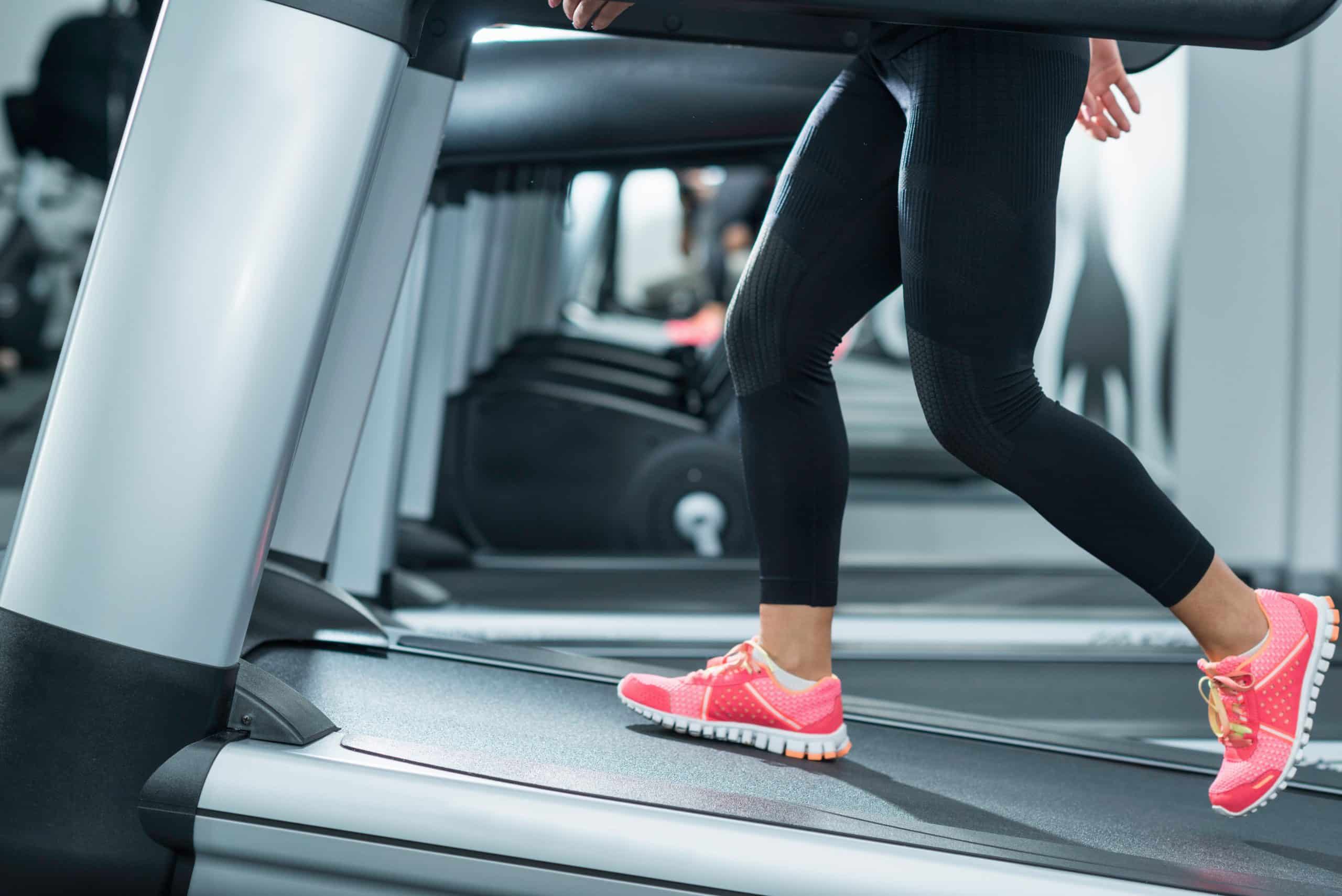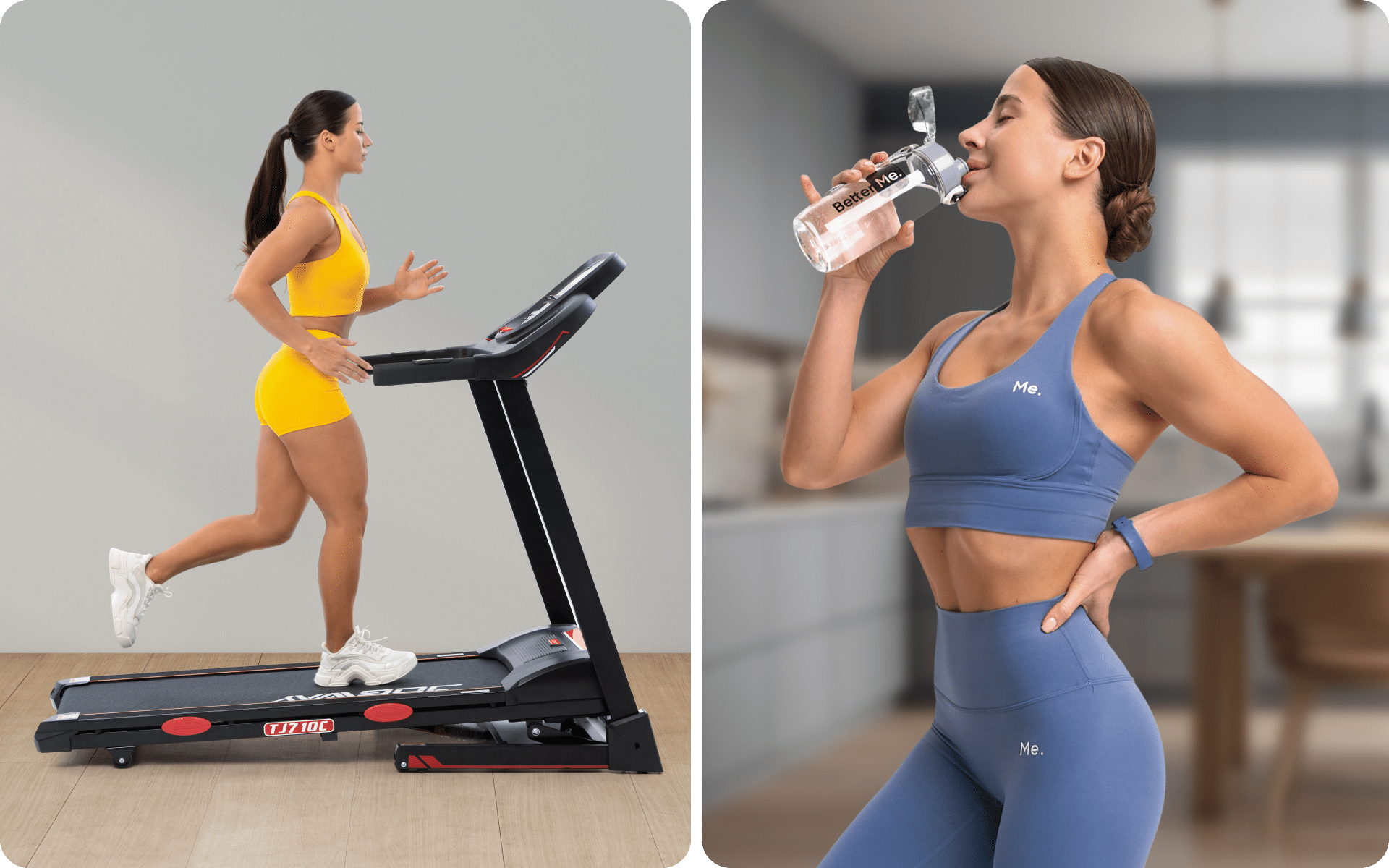People delve into sports routines because they desire to get toned shapes or sustain healthy bodies. However, it is no easy feat to alter your in-chair-all-day habits drastically into something healthy and energetic. Let’s face it, not every person is ready to wake up early, don a sweat suit and rush to the nearest park for invigorated running. Sometimes our laziness, our job nervousness, and many other factors deprive us of the sweaty start of the day. In addition, some people can’t run since their knee joints hurt so badly on each step that they might want to fall on the ground and cry. Therefore, a logical question appears. Is there any healthy substitution for running that also helps you lose weight and makes your heart pump faster? The answer consists of two words – incline walk. This article is dedicated to the benefits of incline walking and why you should add incline walking into your routine.
Is Walking At An Incline Good For Weight Loss?
As we all know, simple walking is an essential part of our life. It improves our sleep, relieves stress, lifts up our mood, and more (3). And when you add a little bit of incline to it you are guaranteed to double the results.
Being a full-body exercise, incline walking has a whole range of benefits beginning with the heart rate boost, trunk, and core improvement, up to calorie burning.
Some people use a treadmill walking incline workout for that and some take advantage of walking up hills.
Treadmills are suitable for adults for daily exercises, and athletic training or injury rehabilitation. One great thing about treadmills is that people of all experience levels can use them (1).
People who have gotten used to the sedentary lifestyle and want to lose calories might find difficulties strolling or running outside but they will enjoy treadmill walks on an incline by starting from a lower pace and gradually moving to a more challenging incline.
No matter whether it’s a treadmill, uphill walking, or even stepping on the stairs – these actions demand more energy than ambling along on the flat ground. Incline walking weight loss requires more intensity which means we need to make more efforts while moving. The more efforts we make the more calories we burn.
Research in 2012 showed that adding 5 or 10 percent of the incline increases the metabolic output (5).
For example, if a 156-pound person burns approximately 268 calories during a flat walk for one hour, the same person will burn 423 calories while walking on the treadmill on the incline or uphill.
Overall, incline walking for fat loss can give you better results in burning your calories. The more calories you burn the better shape you eventually end up with.
Read More: Benefits Of Walking Barefoot On Grass: It Is Not Just A Fad!
How Long Should You Walk On An Incline?
The effects of incline walking are versatile. It does not only boost your heart rate or increase calorie burning. It also strengthens the peroneals and perfectly fits people with weak ankles (4).
Walking uphill puts less pressure on our knees and joints helping us avoid possible injuries.
Nonetheless, you should be careful with the amount of time you are spending on the incline workout. Incline walking on a treadmill can bring amazing results. Both beginners and professionals can do it but only at certain intervals so that your body and muscles wouldn’t feel “overloaded”.
Here is the simple treadmill incline walking workout ideal for both beginners and professionals. You can easily use it as an addition to your cardio routine.
- Warmup: 4 minutes at 0% incline. The warmup is essential since it prepares your body for any kind of training.
- Switch to a 2–3% incline at a slow pace for 3–4 minutes.
- Resting time: 1–2 minutes at 0% incline at a normal pace.
- Switch to a 2–3% incline at a faster pace for 5 minutes
- Resting time: 1–2 minutes at 0% incline at a normal pace.
- Switch to a 2–3% incline at a slow pace for 3 minutes.
- Cooldown period: walk for 4 minutes at 0% incline at a normal pace.
You can perform this incline routine at least 5 times per week and get amazed by the amount of stamina and power you will eventually get.
What Happens If You Walk On An Incline Every Day?
Almost every workout routine demands at least one day of recovery from it. Our muscles and joints need the time to rest from the intense exercises. Thus, running every day is not a good option. Unlike running, incline walking is possible to be performed every day.
So, if you are invigorated enough to tackle your day with it you might be wondering what will happen to your body if you walk on the incline every day.
- Your posterior chain is going to become stronger. You might be thinking, what is the posterior chain? Well, it includes glutes, spine muscles, calves, and hamstrings. These muscles are essential to walking, sitting, and standing. If your posterior chain is healthy you get better posture, flexibility, mobility, and strength in your muscles.
- Your calves and ankles are going to thank you. We usually neglect calves and ankles during the workouts. Luckily, incline walking benefits your calves and ankles perfectly. The stronger calves and ankles you have, the more power in your legs you get.
- Your heart will pump and jump. If you add incline walking to your everyday training routine this will make your heart pump faster. Research in 2013 demonstrated that running on the 2 to 7 percent incline increases the heart rate almost to 10 percent unlike running on a flat surface (2).
However, some people who didn’t get used to incline surfaces might go through slight pain in their muscles. In this case, do not overpressure yourself and stop the workout. Once your body gets used to walking uphill you can implement it into your everyday routine. This will help you perform harder workouts and gain stamina.
If you wish to free yourself from all the extra pounds that have been weighting you down for way too long, start using the BetterMe app and overhaul your entire life!
How Often Should You Do Incline Walking?
Since an incline walking workout doesn’t put as much pressure on your muscles and knee joints as walking you can perform it every day. A simple walk on the incline for 30 minutes per day can improve your muscular endurance.
This is the winning point for you because endurance allows you to perform more physical activities without getting exhausted too quickly.
It doesn’t matter what kind of goals you have. Maybe you desire to cut off extra calories, maybe you are willing to make your heart work faster, or you want to show off your well-trained calves.
Again. This training is versatile. It will be enough for you to perform it for 30 minutes every day. These safety tips will make walking on the incline more effective:
- Keep it slow. Sometimes switching from a flat surface to an incline can be a challenge for your leg muscles. If you do it too quickly you might get dizzy or get shin splints that refer to pain in the front of your lower leg (6).
- Don’t forget about recovery. Your body needs some time to get used to incline walking.
- Head to the physical therapist. If you’re facing pain during incline walking you can consult with a physical therapist. This expert can help you find the right incline without hurting your muscles and joints.
Read More: Walking Backward Benefits For Your Body: Explore Creative Physical Activities
Is Incline Walking Better Than Running?
When people mull over having a toned body the first exercise they think about is running. However, we are aware that running puts more stress on our joints. Here comes incline treadmill walking which is a low-impact activity that everybody can do.
It is rather impressive that walking on the incline is as effective as running.
Walking on an incline vs running – the battle is still going on. In a moment you are going to find the advantages of treadmill incline walking over running.
Advantages
- Treadmill incline walking puts less stress on your knee joints. This is very important. Here is why. When you feel pain in your knee joints you no longer are able to perform any exercise. It deprives you of possible positive workout results. In case there is no knee joint pain you can continue your training.
- A steeper incline helps you burn more calories and tone your leg muscles. But you need to change it gradually, especially when you are a beginner.
- You are less likely to feel pain in your ankles after walking uphill compared to running where a slightly different mistake during the run can lead to huge ankle soreness.
- During incline walking you are engaging core muscles more which helps you lose belly fat.
Nevertheless, a lot of people prefer running because it is a faster way to burn more calories. However, those who desire to lose weight should consider walking uphill or treadmill incline walking because it is more effective in this case. When you walk against gravity your body needs to work harder and it results in losing more calories.
Plus, running can be exhausting and you won’t be able to survive at long distances.
In a nutshell, the incline walking vs running battle is always going to be the topic of medical research.
Still, people who have difficulties with running and consider it to be the best way to lose weight or sustain powerful muscles can sign in relief. Incline walking can be as effective as running and adding it to your workout regime will be a good idea.
Yanking yourself back in shape has never been so easy with our game-changing fitness app! Start transforming your life with BetterMe!
The Bottom Line
Incline walking is a great alternative to running. Here is why you should add incline walking into your life routine – this low-impact activity brings positive changes to your body by improving your heart rate, burning calories, and avoiding pain in knee joints and ankles.
Unlike running you can do incline walking every day for 30 minutes on a treadmill. In case you can’t afford a treadmill you can use uphill walks which benefit your posture and stamina.
Even though incline walking is safer than running you should start it slowly if you are an amateur in it. Change the inclines gradually so that your body would get used to it easier and end up with a toned and powerful body.
DISCLAIMER:
This article is intended for general informational purposes only and does not serve to address individual circumstances. It is not a substitute for professional advice or help and should not be relied on for making any kind of decision-making. Any action taken as a direct or indirect result of the information in this article is entirely at your own risk and is your sole responsibility.
BetterMe, its content staff, and its medical advisors accept no responsibility for inaccuracies, errors, misstatements, inconsistencies, or omissions and specifically disclaim any liability, loss or risk, personal, professional or otherwise, which may be incurred as a consequence, directly or indirectly, of the use and/or application of any content.
You should always seek the advice of your physician or other qualified health provider with any questions you may have regarding a medical condition or your specific situation. Never disregard professional medical advice or delay seeking it because of BetterMe content. If you suspect or think you may have a medical emergency, call your doctor.
SOURCES:
- 13 of the best treadmills for walking in 2022 (2022, medicalnewstoday.com)
- A Paradigm of Uphill Running (2013, ncbi.nlm.nih.gov)
- Mental Benefits of Walking (2021, webmd.com)
- Peroneal muscle activity during different types of walking (2018, ncbi.nlm.nih.gov)
- Predicting the Metabolic Cost of Incline Walking from Muscle Activity and Walking Mechanics (2012, ncbi.nlm.nih.gov)
- Shin splints (2021, mayoclinic.org)











